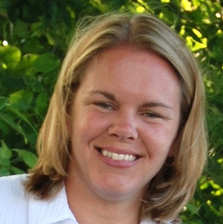
In the early evening of June 7, nine longtime friends who were part of a group that called themselves the Chain Gang met after work for bike ride in downtown Kalamazoo, Michigan. They aimed to cover about 28 miles roundtrip that evening. Five miles in, around 6:30 p.m., a blue pickup truck plowed into the group from behind, killing five riders and injuring four, resulting in the worst vehicle-bike fatal collision in recent memory.
Although studies repeatedly show how beneficial bike commuting is for the environment (emissions), health, traffic, parking and especially revenue for businesses along bike routes, there aren't nearly enough designated bike lanes across the U.S. Whenever the topic of bike commuting comes up, safety is invariably one of the top reasons why the majority of people walk past their bike and get into their car.
At SXSWEco in 2013, PeopleforBikes VP Martha Roskowski reported: "Seventy-five percent of people are concerned for their safety while biking on city streets. Eighty-six percent say they will not ride in unprotected bike lanes, but when they were shown a photo of a protected bike lane (with plastic posts), 90 percent of people would ride in it, and the number climbs to 95 percent if the bike lane had a curb."
PeopleforBikes' Green Lane Project works with cities around the U.S. to help them design an effective protected bike lane system, but every time the organization opens its application process, it is flooded with proposals. Many cities want the organization's help, but only so many make it into the program.
The protected bike lane system in the U.S. is growing very slowly and hasn't reached many areas (like southwest Michigan) yet. So bicyclists continue to take to the open road, as the Chain Gang did. Many of the rural roads in Michigan have very small paved shoulders (or none at all), forcing bicyclists to ride in the road. However, unlike 26 other states, Michigan doesn't have a three-feet rule, cautioning drivers to give bicyclists more space. But some say that even that law doesn't give riders much protection.
Ask any bicyclist that often rides on the roads and they will have a story about a near-miss with a car or an outright collision, and sometimes more than one time.
On June 9, Michigan bill 1029 proposed that pedestrians, bicyclists and people who use wheelchairs for independent mobility be classified as "vulnerable roadway users." Drivers who injure anyone classified as such could receive a year in jail or a $1,000 fine.
NBCNews reported that an analysis of bicycle deaths by the Insurance Institute for Highway Safety, based on U.S. Department of Transportation data, found that 720 bicyclists were killed in crashes with motorists in 2014, down 4 percent from 2013 and 28 percent from 1975. Yet, the majority of people still don't feel safe riding on the roadways without a barrier between them and motorists.
Although the Kalamazoo crash is an awful anomaly, the fact still remains that in any collision between cars and bikes, bikes lose. And as we try to encourage more people to bike instead of drive, the safety issue remains a large obstacle.
Before the truck hit the cyclists, there were three calls to 911 about a blue truck driving erratically. Police were on the lookout, but hadn't spotted it before the crash. No reason has been officially reported for why the driver was impaired, but Charles Pickett Jr. was later charged with five counts of second-degree murder and four counts of reckless driving causing serious impairment for those injured.
Kalamazoo was also the site of a mass shooting in February, in which six people were kill by Jason Dalton, who picked up fares an Uber driver during the rampage. The community is rallying again to support its residents after another tragedy. (#kalamazoostrong)
On June 8, the Kalamazoo bicycling community hosted a silent ride in remembrance of the five bicyclists killed and in support of the wounded survivors. It was open to anyone with a bike and a helmet, and hundreds turned out. The ride began at Arcadia Brewing Co. in downtown Kalamazoo. Participant Bobby Guy posted this video.
https://youtu.be/NnqDGbgtvM8
On June 14, Lance Armstrong came to Kalamazoo to finish their ride.
Along with family and friends of the accident victims, Armstrong donned a Chain Gang jersey, began at their starting point, and rode the 28.5 mile route they began a week earlier.
The Detroit Free Press reported that Armstrong "walked slowly through a crowd of hundreds to shake hands, to listen politely, to grieve with a community reeling from last week’s crash that killed five bicyclists and injured four others."
"We’ve all had cars come just a little too close and it scares you,” Armstrong told a crowd near the Kalamazoo County Health and Community Services parking lot, the paper reported. “We all know that, but none of us knew this. Over the years, there have been tragedies and incidents but nothing to this level. As I told Steve [Johnson, of Johnson Cycle Works] and his group earlier, thank you for letting me come.“I know that I’m not for everybody, but this one touched home.”
image credits: 1) ghost bike - John McNeill WKZO; 2) Lance Armstrong ride - Kalamazoo resident and avid bicyclist, Rana Findling.

Andrea Newell has more than ten years of experience designing, developing and writing ERP e-learning materials for large corporations in several industries. She was a consultant for PricewaterhouseCoopers and a contract consultant for companies like IBM, BP, Marathon Oil, Pfizer, and Steelcase, among others. She is a writer and former editor at TriplePundit and a social media blog fellow at The Story of Stuff Project. She has contributed to In Good Company (Vault's CSR blog), Evolved Employer, The Glass Hammer, EcoLocalizer and CSRwire. She is a volunteer at the West Michigan Environmental Action Council and lives in Grand Rapids, Michigan. You can reach her at andrea.g.newell@gmail.com and @anewell3p on Twitter.














